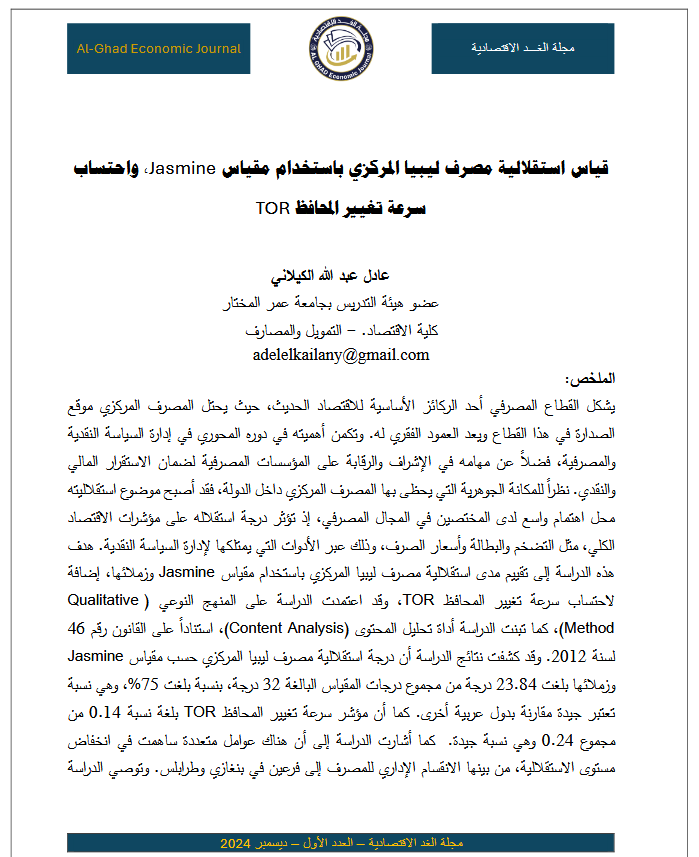Measuring the Independence of the Central Bank of Libya Using the Jasmine Index and Calculating the Turnover Rate (TOR) of Governors
Keywords:
Central Banks, Central Bank Independence, Central Bank of Libya, Independence StandardsAbstract
The banking sector is considered one of the most important components of the contemporary economic sectors, and the Central Bank comes at the top of the pyramid of this sector as it represents the backbone of the banking sector, for its role in managing monetary and banking policy, and supervising and controlling the rest of the components of the banking sector, in order to maintain financial and monetary stability. Given the importance of the central bank and its position in the state, the issue of the independence of the central bank has been of great importance to those interested in this sector, and the degree of independence of the central bank is reflected on the components of the macro economy such as inflation, unemployment, exchange rates, etc., through the function of the central bank and the tools it possesses to manage monetary policy. This paper aims to measure the independence of the Central Bank of Libya using the Grilli & Cukierman model. The research relied on the qualitative method, using content analysis to analyze the Grilli & Cukierman model based on Law 46 of 2012. The study concluded that the degree of independence of the Central Bank of Libya was 66.4%, which is a modest degree compared to some Arab countries. The study also indicates that there are a number of variables that were reflected in the low degree of independence, including the administrative division of the Central Bank of Libya into the Central Bank of Libya, Benghazi and Tripoli.









